Nosy Be is a small tropical island (about 300 km2), located in the Mozambique channel, 8 km from the northern coast of Madagascar, with which it is connected by several fast boats to the port of Ankify and from there to the city of Ambanja.
It is also known by the Malagasy nickname “nosy manitra”, that is, scented island, thanks to the scent of spices, ylang ylang, frangipane, vanilla, which can be smelled everywhere. The coasts of the island are rugged, with beautiful coves. The hinterland is pleasant, hilly with 12 lakes that occupy the volcanic craters on the slopes of Mont Passot, an important water reserve for the island’s inhabitants.
The extraordinary biodiversity and nature are the great wealth of Madagascar. It is an extraordinary habitat for unique species in the world, plants and animals, including turtles, chameleons and baobabs, but also various species of lemurs, including the macaque (Eulemur macaco) present only on the island of Nosy Be and nearby Nosy Komba. The birds also deserve attention, attracting birdwatchers from all over the world.
The Nosy Be coral reef is also the third in the world for coral biodiversity. There are over 2500 species of soft and hard corals, to the delight of diving and snorkelling lovers. The archipelago of Nosy Be has a great charm due to the multiplicity of its landscapes: it ranges from volcanic sand beaches to the white or coral ones of the other islands that are part of it, including Nosy Tanikely, Nosy Sakatia, Nosy Komba, Nosy Iranja , Nosy Fanihy, Nosy Faly.
Another richness of Madagascar is the incredible mix of races and ethnic groups that has occurred over time.
The Malagasy are in fact a people who descend from navigators who colonized the island coming from Malaysia and Indonesia, and mixing with the ancestral Vazimba people; subsequently the Portuguese and the French arrived.
Today the inhabitants of Madagascar are divided into 18 ethnic groups, in harmony with each other, each with different dialects, religious rites and beliefs in occult powers. The only element in common between the various ethnic groups are the “fady” (taboos) and the cult of the ancestors.
 In fact, they profess different religions (Islamic, Christian) but in their ancestral animism many phenomena or things belonging to Nature are pervaded by benign spirits that bring heaven and earth, man and divine into contact and therefore worthy of respect and worship.
In fact, they profess different religions (Islamic, Christian) but in their ancestral animism many phenomena or things belonging to Nature are pervaded by benign spirits that bring heaven and earth, man and divine into contact and therefore worthy of respect and worship.
The Sakalava, the prevalent ethnic group in Nosy Be, have very ancient African origins (probably arrived with migratory flows of Bantu peoples).
The name of this ethnic group derives from the Arabic saqaliba and indirectly from the Latin esclavus (“slave”). They are a people whose livelihood is centered on zebu breeding, fishing, the cultivation of cassava, rice, corn, ylang ylang and spices. They venerate the deceased and natural sacred places, with very suggestive rituals. Their tombs are built mainly of wood and often decorated with sculptures with erotic subjects as a message of fertility.











